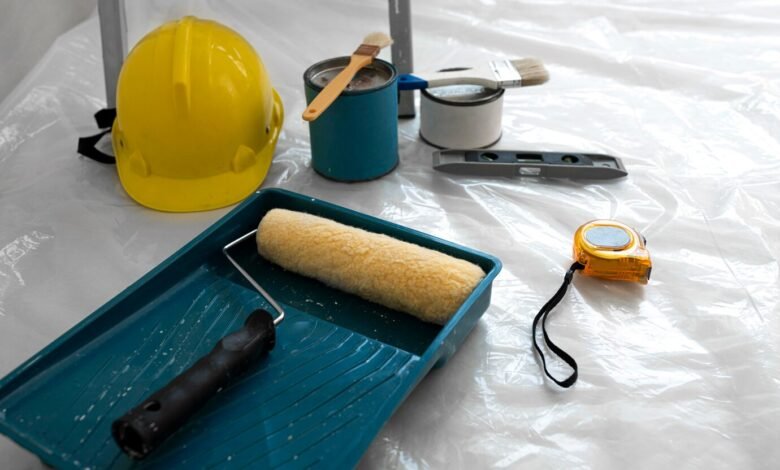Paint Roller and Its Essential Role in Painting Projects

Painting a room or a surface can be a daunting task, but with the right tools, the process becomes much smoother. One of the most important tools in any painter’s arsenal is the paint roller and. Designed to cover large areas quickly and efficiently, paint rollers come in various types, each suited for different surfaces and paint finishes. Whether you’re a DIY enthusiast or a professional painter, understanding the different aspects of paint rollers—such as their types, materials, and techniques for optimal use—can significantly enhance the quality of your work.
1. Types of Paint Rollers
Paint rollers are available in multiple varieties, each designed for specific applications. Synthetic fiber rollers, typically made from nylon or polyester, are ideal for water-based paints like latex, as they hold paint well and provide a smooth finish. Natural fiber rollers, often constructed from lamb’s wool, are better suited for oil-based paints due to their superior absorption and release properties. Additionally, there are foam rollers, which are excellent for smooth surfaces like cabinets and doors, as they minimize streaks and bubbles. Choosing the right roller type ensures even coverage and a professional-looking result.
2. Roller Nap Length and Its Importance
The nap length (the thickness of the roller cover’s fibers) plays a crucial role in how the paint is applied. A short nap (1/4 inch to 3/8 inch) works best on smooth surfaces like drywall or finished wood, as it provides a thin, even coat. A medium nap (1/2 inch to 3/4 inch) is ideal for slightly textured surfaces, such as lightly stuccoed walls, helping the paint reach small crevices. For heavily textured walls, like brick or concrete, a long nap (1 inch or more) is necessary to ensure the paint penetrates deep into the uneven surface. Selecting the correct nap length prevents excess paint buildup and ensures uniform coverage.
3. Proper Techniques for Using a Paint Roller
Using a paint roller efficiently requires the right technique to avoid streaks, drips, and uneven application. Before starting, load the roller evenly by dipping it into the paint tray and rolling it back and forth to distribute the paint. Apply paint in a “W” or “M” pattern to spread it uniformly, then fill in the gaps with vertical or horizontal strokes. Avoid pressing too hard, as this can cause splattering and uneven layers. Additionally, maintaining a wet edge—painting in sections and blending each new stroke into the previous one before it dries—helps prevent visible lap marks. Mastering these techniques leads to a flawless finish.
4. Cleaning and Maintaining Paint Rollers
Proper maintenance extends the lifespan of paint rollers and ensures consistent performance. After using a roller with water-based paint, rinse it thoroughly under warm water until the water runs clear, then spin-dry it using a roller cleaner or your hands. For oil-based paints, use mineral spirits or paint thinner to dissolve the paint before washing with soap and water. Storing rollers in a sealed plastic bag or airtight container keeps them from drying out between coats. Regular cleaning prevents hardened paint from ruining the roller fibers, saving time and money on replacements.
5. Common Mistakes to Avoid When Using a Paint Roller
Even experienced painters can make mistakes that affect the final result. One common error is overloading the roller with paint, which leads to drips and an uneven finish. Another mistake is rolling too quickly, as this can create splatters and poor coverage. Additionally, using the wrong roller nap for the surface can result in patchy application or excessive paint absorption. Neglecting to prime the surface before painting can also cause adhesion issues and uneven color. By being mindful of these pitfalls, you can achieve a smoother, more professional paint job.
Conclusion
The paint roller is an indispensable tool for achieving a smooth, efficient, and high-quality paint application. By understanding the different types of rollers, selecting the appropriate nap length, using proper techniques, and maintaining the tool correctly, you can enhance your painting projects significantly. Avoiding common mistakes further ensures a flawless finish, whether you’re refreshing a single room or tackling a large-scale renovation. With the right knowledge and approach, the humble paint roller can be your best ally in transforming any space with ease.


